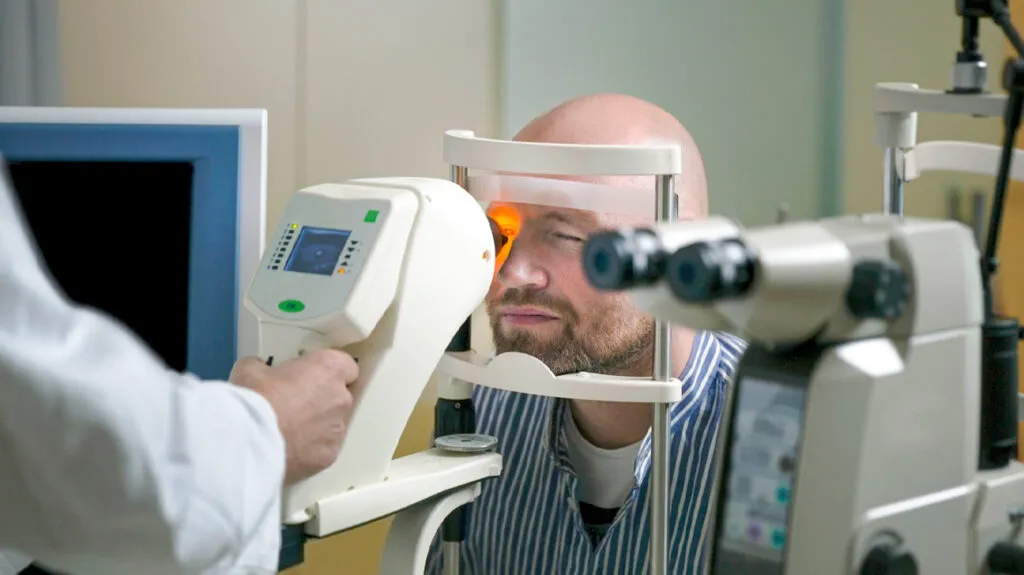Diabetic retinopathy is a serious condition of the eye brought on by diabetes. If left untreated, it can lead to vision loss. Early detection by an eye doctor and an ongoing treatment plan can help preserve your vision. Here is more information about this condition:
Symptoms of Diabetic Retinopathy
The first step in detecting diabetic retinopathy is to recognize the symptoms. Although you may not experience any symptoms in the earliest stage, many people develop blurry or double vision as the disease progresses. They feel pressure or pain in the eye and see floaters or spots. As the symptoms worsen, they may have blank areas in their vision or see flashing lights. It also becomes harder to read or see details as the symptoms worsen.
How Doctors Diagnose Diabetic Retinopathy
If you’ve been diagnosed with diabetes and have no symptoms of diabetic retinopathy, the doctor will perform several tests to determine the health of your eyes at each visit. You can prevent the progression of the disease with annual eye exams. Once you experience symptoms of the disease and schedule a visit with your eye doctor, they will perform more specific tests to determine a diagnosis.
Basic Eye Tests
The first test is a simple eye chart test known as a visual acuity test. The doctor will ask you to read the letters on the eye chart. It measures your ability to read clearly at different distances. A tonometry test is the standard way to measure the amount of pressure in the eye. It helps determine if you have an abnormal amount of fluid buildup. Regular dilation of the pupil is another test that allows the doctor to see your retina and lens up close.
Fluorescein Angiography
If you have diabetes, the doctor may perform a comprehensive dilated eye exam even without any symptoms. They place drops in your eyes to widen the pupils, just like with regular dilation. The doctor may also run dye through your veins and monitor how it looks when it reaches your eyes. With this test, they can tell if your blood vessels are closed or leaking fluid.
Optical Coherence Tomography
The optical coherence tomography test, or OCT, creates images of the retina. This test measures the thickness of the retina, which indicates how much fluid has leaked. The OCT test may be performed periodically after diagnosis to tell how much treatment is helping.
How Doctors Treat Diabetic Retinopathy
Once the doctor diagnoses you with diabetic retinopathy, they create a personalized treatment plan based on your age, overall health, and the severity of the condition. If you show early signs of diabetic retinopathy, the doctor may not recommend treatment other than continued monitoring with regular eye exams. If you manage your diabetes, the disease may not progress further.
For more advanced cases, you have several treatment options. The eye doctor will recommend one or more of these treatments to stop the progression of the disease:
- Injections: The doctor injects medications into the eye to stop the growth of new blood vessels and to decrease the buildup of fluid. The injections are repeated periodically.
- Photocoagulation: This is a laser treatment that seals the leaks in the blood vessels by burning them. It doesn’t improve your vision, but it does prevent it from worsening. Panretinal photocoagulation shrinks the abnormal blood vessels.
- Vitrectomy: The doctor makes a tiny incision in your eye to remove scar tissue and blood from the middle of the eye.
Schedule Regular Visits With an Eye Doctor
If you have diabetes, you can prevent diabetic retinopathy from harming your vision or making it worse with regular exams by an eye doctor. Schedule a visit and let your doctor know you have diabetes. Comprehensive eye exams diagnose conditions in the early stages, even before symptoms are present. The doctor begins treatment and management to help you keep your vision healthy and avoid vision loss. Contact an eye clinic today for a comprehensive exam.
Don’t miss out on updates and alerts – stay connected! Vents Breaking

